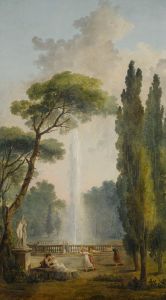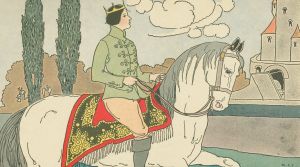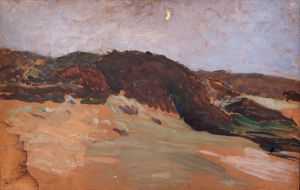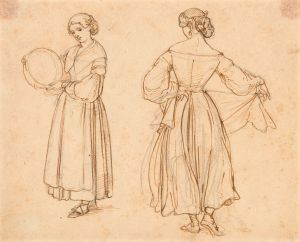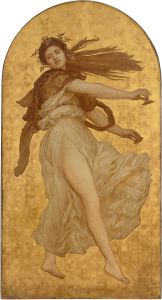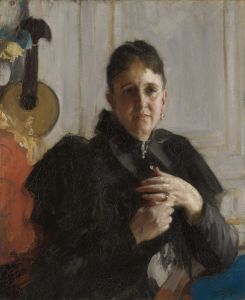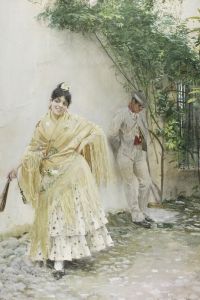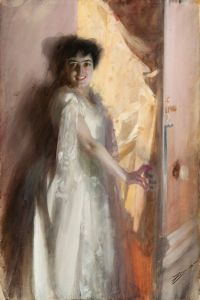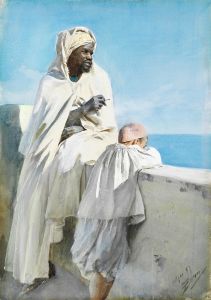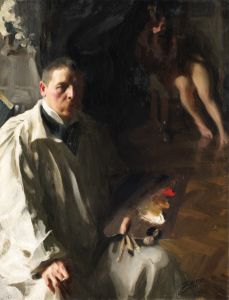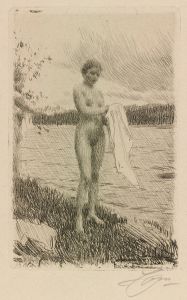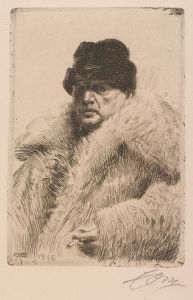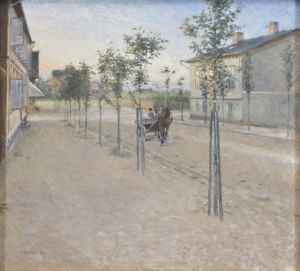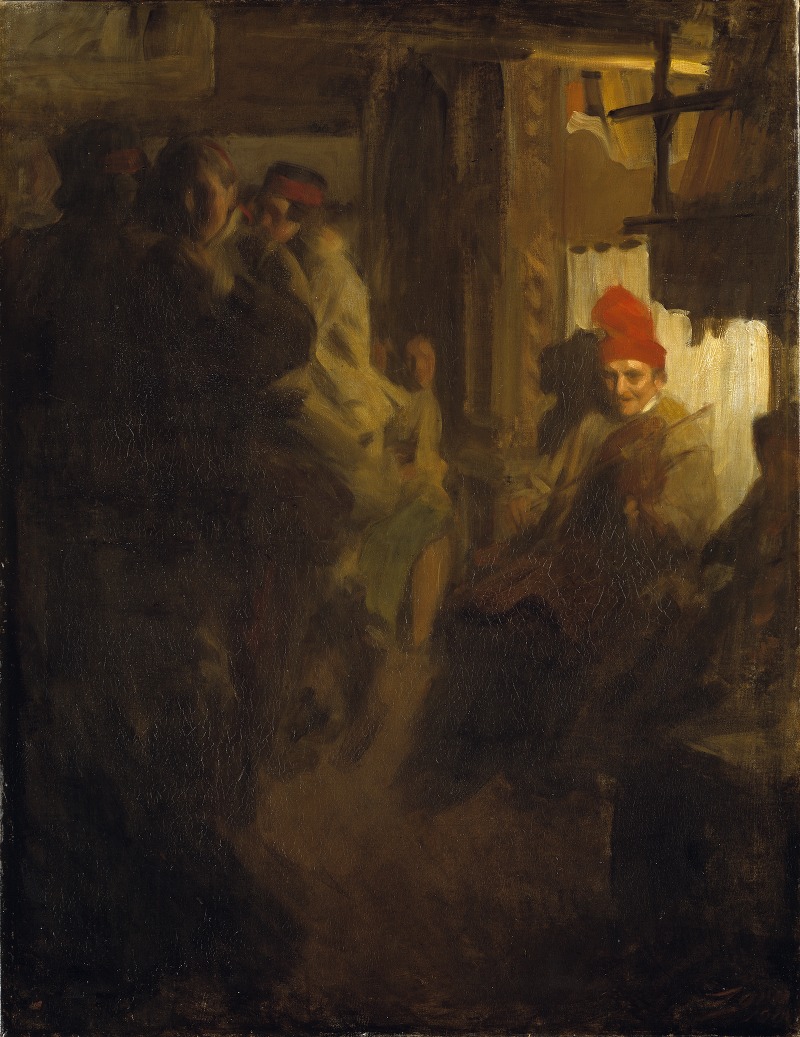
Dancing in Gopsmor
A hand-painted replica of Anders Zorn’s masterpiece Dancing in Gopsmor, meticulously crafted by professional artists to capture the true essence of the original. Each piece is created with museum-quality canvas and rare mineral pigments, carefully painted by experienced artists with delicate brushstrokes and rich, layered colors to perfectly recreate the texture of the original artwork. Unlike machine-printed reproductions, this hand-painted version brings the painting to life, infused with the artist’s emotions and skill in every stroke. Whether for personal collection or home decoration, it instantly elevates the artistic atmosphere of any space.
"Dancing in Gopsmor" is a painting by the Swedish artist Anders Zorn, created in 1914. Zorn, one of Sweden's most renowned painters, was celebrated for his mastery of light, movement, and the human form. This particular work exemplifies his ability to capture dynamic scenes and the essence of rural Swedish life.
The painting depicts a lively outdoor dance scene in Gopsmor, a small village in Sweden where Zorn owned a cabin and often spent time. The setting is characteristic of Zorn's interest in portraying traditional Swedish culture and customs. In the painting, young men and women are shown dancing energetically, surrounded by the natural beauty of the Swedish countryside. The figures are rendered with Zorn's signature loose yet precise brushwork, which conveys a sense of movement and vitality.
Zorn's use of light in "Dancing in Gopsmor" is particularly notable. The interplay of sunlight filtering through the trees creates a warm and inviting atmosphere, highlighting the dancers and adding depth to the composition. The painting reflects Zorn's deep appreciation for the rural traditions of his homeland and his ability to bring them to life on canvas.
Anders Zorn was a prominent figure in the art world during his lifetime, achieving international acclaim for his portraits, genre scenes, and nudes. He was also a skilled etcher and watercolorist. Born in 1860 in Mora, Sweden, Zorn gained recognition early in his career and became one of the most sought-after portrait painters of his time, painting notable figures such as U.S. Presidents Grover Cleveland, William Howard Taft, and Theodore Roosevelt.
"Dancing in Gopsmor" is part of Zorn's broader body of work that celebrates Swedish folk traditions and rural life. The painting is housed in the Zorn Museum in Mora, Sweden, which is dedicated to preserving and showcasing the artist's legacy. The museum contains a significant collection of Zorn's works, including paintings, watercolors, and etchings, as well as personal artifacts and items related to his life and career.
Through works like "Dancing in Gopsmor," Anders Zorn has left an enduring legacy as one of Sweden's most important artists, capturing the spirit of his time and place with remarkable skill and sensitivity.





